We believe in bringing your whole selves to work. Many times, that might mean stepping away from work for a bit to celebrate and wholly focus on your family.
This is a foundational pillar here at Buffer and we’re committed to supporting our team members in many different ways: perks, flexible time off and a fully-paid family leave.
In our experiences as a growing startup, no two individual’s experience is quite the same—especially with family leave. So Buffer has a loose policy that recommends 1–3 months of paid leave in the event of the birth or adoption of a child.
As the first mom to take a paid leave at Buffer, there were so many things I hadn’t anticipated and so many ways that Buffer’s culture and team supported me.
After I returned to work and talked to other Buffer parents, I began to wonder what the experience was like from the dads’ point of view.
What’s the dads’ point of view?
Around the world, fathers are increasingly being offered the same or similar leave as mothers (though in the US, it is typically unpaid time). In many cases, tech is leading the way. Facebook Chief Executive Officer Mark Zuckerberg recently took two of the four months of paid leave Facebook allows.
By the numbers:
- 89 percent of men believe it’s important to have paid family leave.
- In the U.S., 7 in 10 fathers who took parental leave took 10 days of leave or less.
- Since California adopted a family paid leave law, the rate of men filing for the benefit increased from 17 percent to 26 percent in five years.
- 13 percent of men who took parental leave received pay versus 21 percent for women.
- Three states – California, New Jersey, and Rhode Island – provide paid family leave to both mothers and fathers on an equal basis.
- Iceland has one of the most generous paid leave policies for fathers: 90 days at 80% pay.
According to the U.S. Department of Labor, time off for dads—especially longer leaves of several weeks or months—can promote parent-child bonding, improve outcomes for children, and even increase gender equity at home and at the workplace.
Dads who take time off after their child’s birth are more likely to be involved in the child’s life later on. A 2007 study from researchers at Columbia University found that fathers who take longer leaves are more involved in child care even months after returning to work.
It’s good for moms, too, helping reduce the risk of postpartum depression and also boosting healthy hormones. Paid leave for dads also promotes pay equality in the workplace, and greater opportunities for sharing family responsibilities, which allows more women to further advance their careers.
To promote the idea of how important family leave for dads can be, we asked three of our amazing fathers to share their family leave experiences while working at Buffer.
Steve: Remote working made a dream a reality
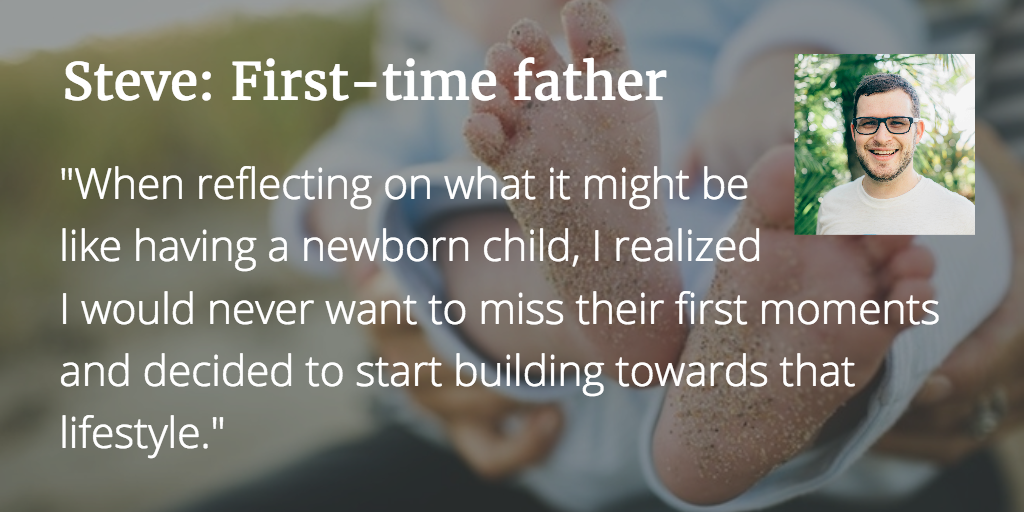
Location: Cheshire, U.K.
Family: Steve and his wife, Wing, welcomed their first child, Leo, this May
Leave time: 3 weeks of paid leave
When I first entered the workforce, I did some math and quickly realized that I would be spending more of my life in an office with my colleagues than at home with my family. This realization scared me a little. There had to be a better way or at least a way where one could have that more ideal life/work balance.
When reflecting on what it might be like having a child, I realized I would never want to miss their first moments and decided to start building towards that lifestyle.
Many years after this conclusion, I’m so grateful to have come to work at Buffer. Our value of “Live Smarter, Not Harder” is so important to all of us. Especially when it comes to our health, wellbeing and overall empathy towards one another.
Little did Wing and I know that we’d be expecting our little Leo within my first year at Buffer! I knew that being able to work remotely, I would be able to spend those precious moments with our newborn.
Nudged in a new direction
When it came almost time for Wing to go into labor, the team rallied around me and were fully supportive of the fact that, at the drop of a hat, I’d be no longer available. All of this helped put me at ease.
Buffer has been so gracious to my family, and I was offered to take as much time as needed to settle into parenthood. I initially suggested taking a week of paternity leave and was warmly urged to take longer — something upon reflection; I’m super grateful that I did.
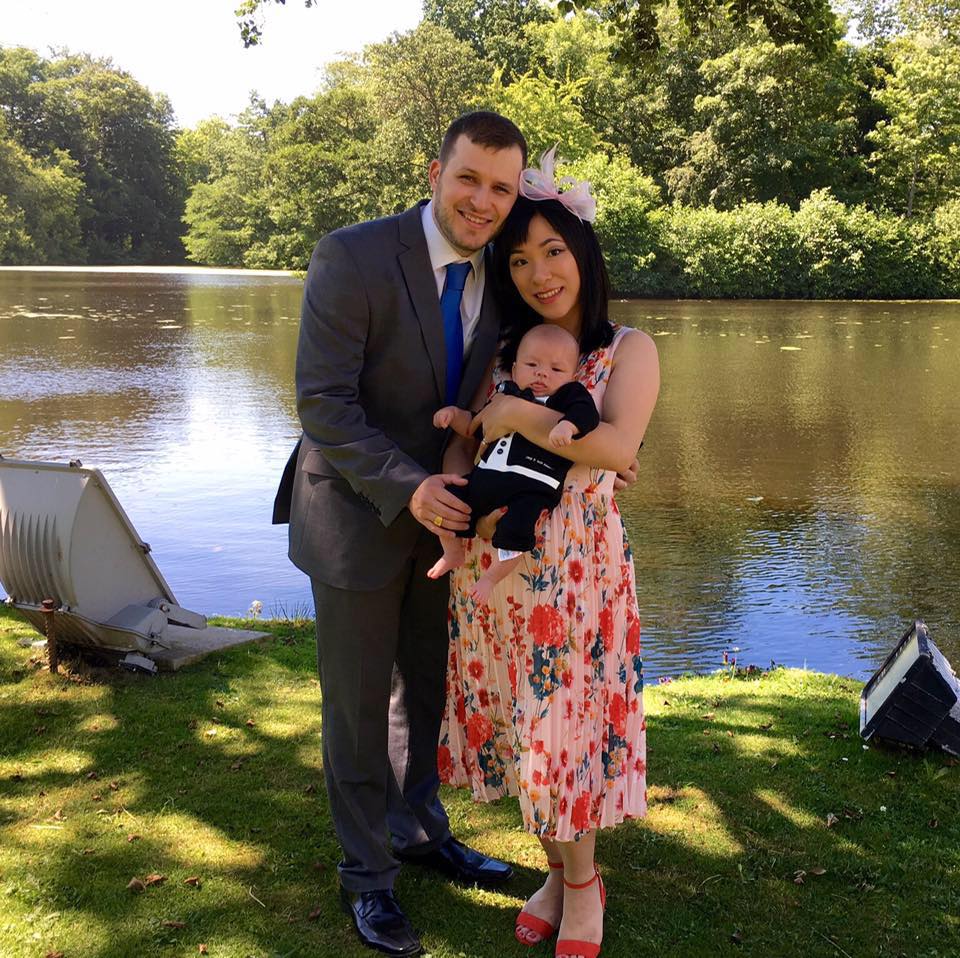
If I’d only have taken one week, we would have still been in the hospital when I started working again – little Leo had jaundice and required a bit more care.
Emotionally, having only one week would have been challenging as well. It was quite strange as a new parent to experience so many new emotions at once.
Being a new parent is a massive responsibility, and those extra couple of weeks allowed me to not have to worry about my responsibilities at Buffer. It’s a big job alone: figuring out how to be a new dad, juggling the nurse visits, midwives and appointments that came with those first few weeks.
At the time, the nudges to take more time helped me really pause and reflect. While I don’t mind working crazy hours, it was helpful to step back and think about things looking differently with a little one. As I reflect now, I realize fondly that my teammates really care about me as a person and a dad.
Transitioning back to work
In my last few days of my leave, I felt I had a better grasp of parenting and wanted to see how it was to also do work. By then, we were a bit more settled in with the new member of the family, the new sleeping routines. I felt 100 percent ready to dive back into work.
Life and work now is even better than I imagined. I love working – I love the work I do, so it doesn’t feel like work to me. With not having to commute and missing a chunk of my son’s day, I am so grateful for this every moment.
Todd: Finding freedom and support in flexibility
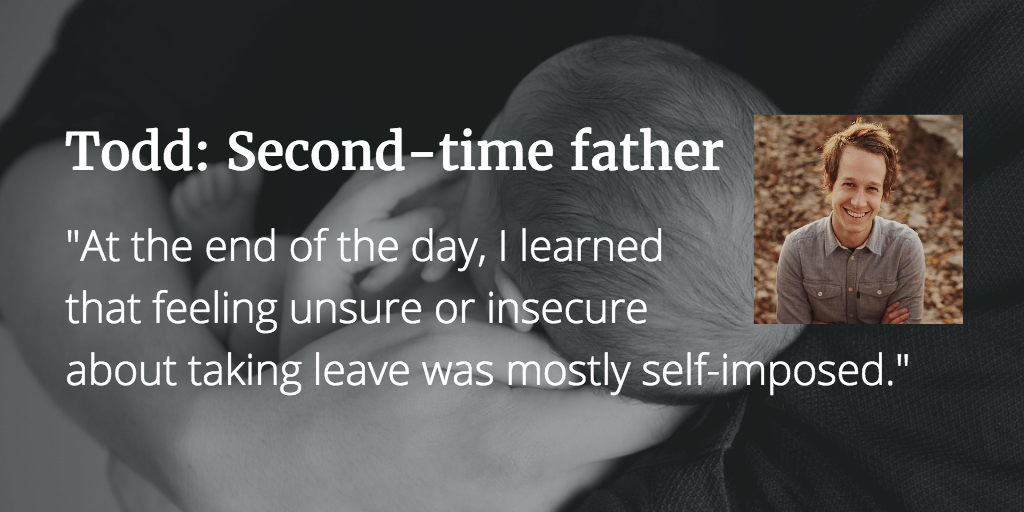
Location: Louisville, KY
Family: Todd and his wife have two boys
Leave time: 10 days of paid leave
Family leave for me was quite a unique experience. I still remember how supported I felt by my Buffer teammates to take time off to be with my wife and new son.
Leading up to the birth of my youngest child, I had just accepted the offer to be a full-time Buffer teammate. I remember finding myself in tension with the decision I was faced: Should I take a longer leave or make it a bit shorter so that I could go attend our retreat in Hawaii?
To go to retreat? Or not to go to retreat?
As our retreats only take place once or twice a year, it felt key to attend the retreat and make some important bonds with my team. As a family we were also eager to get back to a normal routine, which included my work at Buffer!
My team encouraged me to do what felt best for me and helped share several links to internal discussions and advice threads from other folks who had taken family leave.
My family leave was a 10-day period spent with my wife, Megan, oldest son, Simon and our newest addition, Leo. On day 11, I left my cozy little home in Louisville to fly to be with a group of nearly 100 co-workers I’d only met via video. I thought about taking more time off after Hawaii but it felt great to be home and ease back into normal routines.
Looking back on this decision, I wouldn’t change a thing (though I also wouldn’t consider it a good guide in making your own decisions – it was a bit of a hectic time!) My wife had her whole family close by and was provided all the support she could need for the two young boys. Her support and encouragement to be with my team so shortly after the birth of our son greatly influenced my decision.
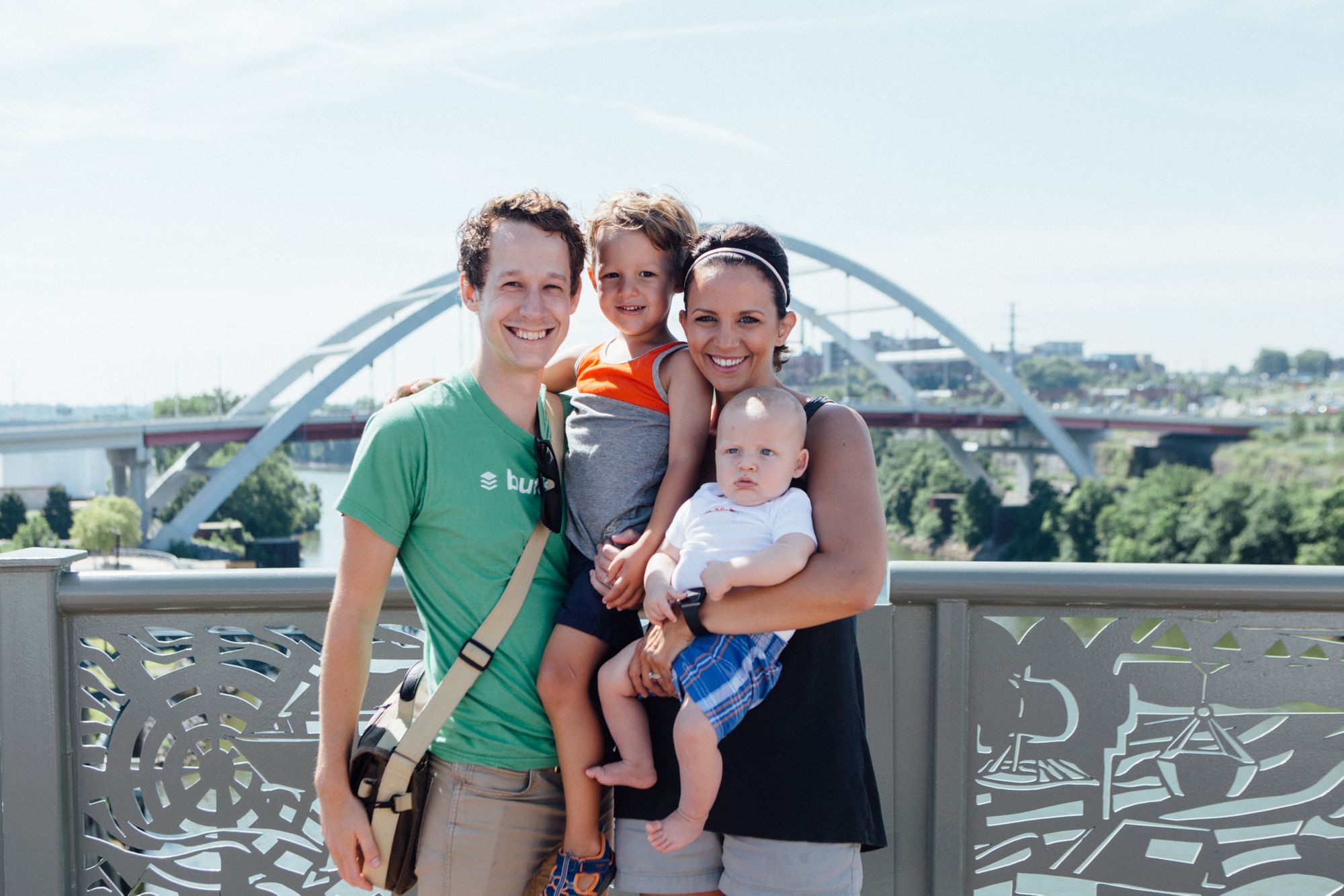
Self-imposed pressure
Overall, I see looking back that I put a lot of pressure on myself in such a unique circumstance. I had only started full-time at Buffer a month before my leave. I remember wondering, would my contributions be missed? Would I be able to return and perform at the level and quality I was delivering before I went on leave? But my team leads, teammates and family all offered their support.
At the end of the day, my feeling unsure or insecure about taking leave was mostly self-imposed and had a lot to do with how new I was to the company. I’m not 100% convinced this is something that can just be ignored, but I do think it is an important conversation that all too often is left undiscussed. The pressures we place on ourselves in personal decisions in work are tough topics to talk about, but these are worthwhile to pursue and discuss to create an environment that will support you and others in that situation.
It’s so hard to walk away from something you’ve built and expect it to be there when you return. But the sweet time I was able to spend with my wife and two boys was all worth it. With the support of my family and teammates, I was able to make the best decision for us.
Roy’s Story: From insecure to indebted
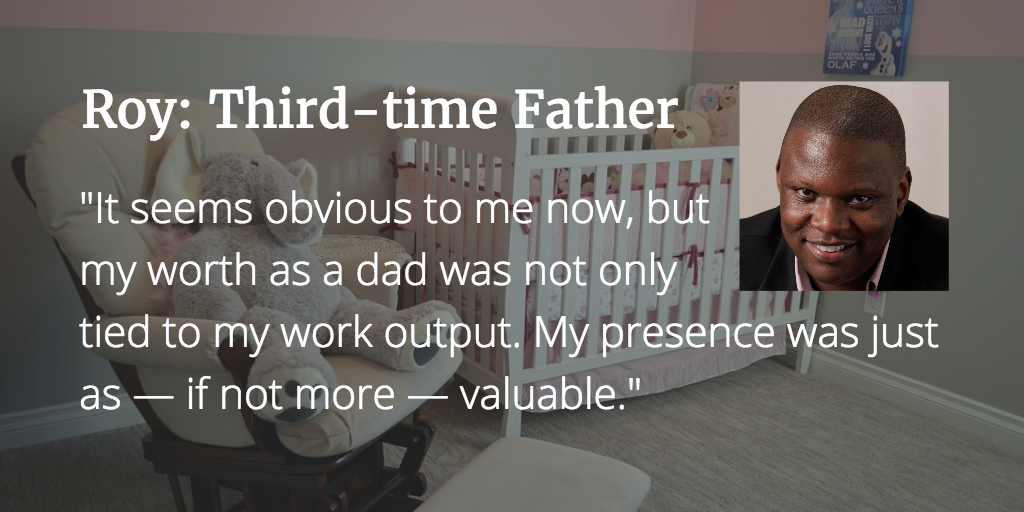
Location: St. Catharines, Ontario, Canada.
Family: Roy and his wife, Deb, are the parents of three boys
Leave time: One month of paid family leave
When I was got offered a role at Buffer in 2015, my wife Deborah and I were totally giddy.
Not only did we love Buffer as a product, but the perks on offer were sort of surreal. Free Kindles and Jawbones, company retreats — it was too good to be true! To top it off, Deborah was a few months pregnant when I was hired, so the parental leave policy was extra exciting for us.
As Deborah’s due date came ever closer (a few days before the start of Buffer’s Hawaii retreat), I had to decide what amount of time was appropriate for parental leave as a part of the Buffer team.
Hello insecurity, my old friend
The decision about whether or not to attend the Hawaii retreat turned out to be pretty simple: It was pretty clear that the place for me to be was home with Deborah. I was bummed to miss a tropical retreat with my teammates, but I can only experience the birth and early days of my child but once.
With the decision made to miss out on Hawaii, I was now faced with decision number two — how long to take off for parental leave. My old insecurities kicked into high gear.
Pre-Buffer — when I worked as a consultant — I was convinced that working long hours was the best way to provide for my family. On most days, I would leave before Deborah and the kids were up and nearly half the time I’d return home when they were asleep.
Over the course of a few years I’d hardwired a flawed equation into my subconscious: Time Spent Working + Hard Work = My Value As a Man.
With this hidden thought pattern guiding me, I shared some initial thoughts with my team about how long to take off for parental leave: one week.
While I did plan to create a daily schedule that allowed me to take care of Deborah and the kids, this misses the obvious point. I had so closely linked my work output to my value that I was willing to reject paid parental leave.
The benefits of advice
I didn’t come to this realization on my own. It took a lot of help from my gracious teammates.
After I shared an initial Discourse post about taking time off, I got some superb advice from fellow Bufferoos.



Reading these (and other) replies got me thinking about what was really causing me to only request one week off. A lot of thoughts were running through my mind as I considered parental leave more deeply. One quote in particular stood out to me:
“You can easily judge the character of a man by how he treats those who can do nothing for him.” — Malcolm Forbes
Parental leave placed me in a position where I could do nothing, at least according to my subconscious value system. How would I treat myself? How would I regard my worth when I could do no work?
The value of time away from work
After 10 days of reflection and chats, I decided to take the full month of parental leave. Even then, I didn’t foresee how much it would mean to be fully disconnected.
- I was able to be fully present for Deborah and Zane on the delivery day and for the important first few days after he was born.
- With our parents taking care of the older boys for a week, I was able to do let Deborah focus on resting and enjoying Zane as much as possible.
- For a full month I had the freedom to stay up late with Zane, run to the store, have fun with the older boys…basically do whatever the family needed at that moment in time without worrying about work.
It meant so much to be there for Deborah and our kids for a full month.
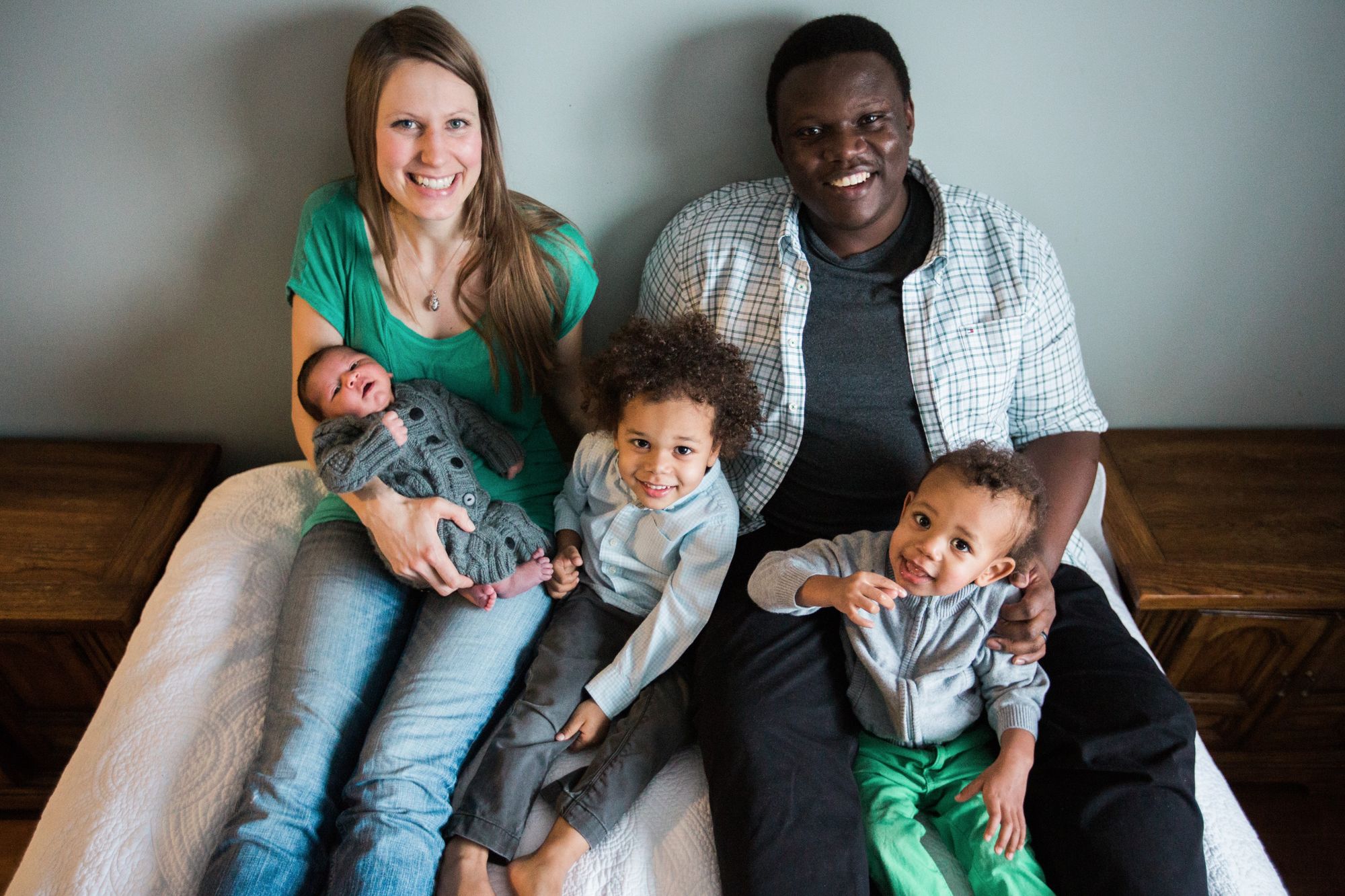
It seems obvious to me now, but my worth as a dad was not only tied to my work output. My presence was just as—if not more—valuable.
In this regard, I feel as though aside from salary, parental leave is the best gift Buffer provides for families.
The birth of a child is an incredible, once-in-a-lifetime experience. The adjustment to any baby for any parent is huge. Giving parents the option to disconnect for an extended period of time during this pivotal life event is an incredibly caring gesture, and one that really matters.
Of course, I can’t speak for all dads. But for me, an extended parental leave represented the best experience I’ve had so far at Buffer.
How these experiences shaped our policy at Buffer
Looking at our small data set of of Buffer dads’ family leave experiences, we find an average family leave of about 3 weeks — a bit below our minimum recommendation, even with our friendly nudges.
Does this mean the number we recommend isn’t quite right? Or is there more we can do to normalize family leave for all? We think it’s likely the second one.
Approximately 85% of new fathers take some time off after the birth of a child, and the vast majority take only a week or two, according to a 2011 study of workers at four Fortune 500 companies by the Boston College Center for Work and Family.
“There’s still a stigma associated with men who put parenting on an equal footing with their jobs,” Scott Coltrane, a sociologist at the University of Oregon, told the Wall Street Journal. “Most employers still assume that work comes first for men, while women do all the child care.”
Common themes from our Buffer dads bear this out. There was a strong feeling of guilt or “fear of missing out” in taking too much time. This isn’t a one-size-fits-all situation, but it feels like we can do more to provide a healthy, guilt-free environment for any teammate having this experience.
Our biggest learning from each family leave experience has been the value of validating moms and dads as they share their plans and encouraging them to reflect deeply to find the best length of leave for their family and team.
We plan to keep spending time coaching each teammate one-on-one to ease fears. We also want to work with team leads to create an inclusive and healthy environment for taking time away, and to find more ways to celebrate time away as an investment into the health and wellness of our company.
We’re excited for more Buffer babies and more unique stories to come.
Over to you
Have you or someone close to you taken a family leave? What was the experience like? Do you have any ideas for how we might encourage and better support families in the workplace? I’d love to hear all your thoughts and reactions in the comments!
Try Buffer for free
190,000+ creators, small businesses, and marketers use Buffer to grow their audiences every month.




